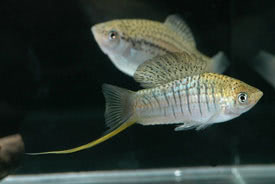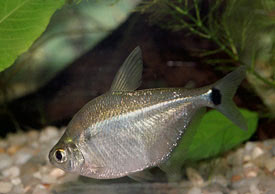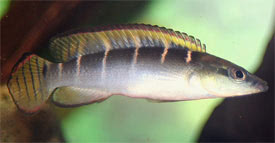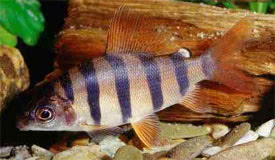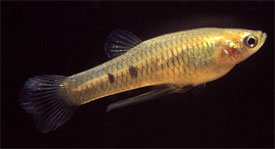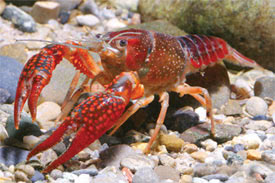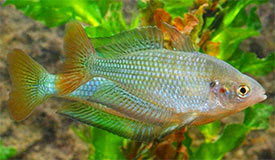
 Magyarul / Hungarian
Magyarul / Hungarian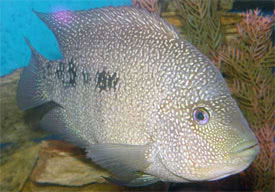
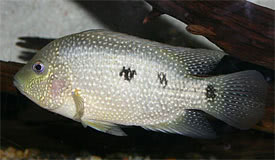
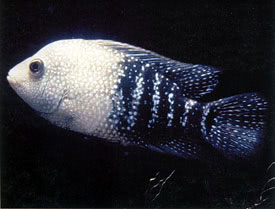
- Scientific name: Herichthys cyanoguttatus
- Synonyms: Heros cyanoguttatus, Heros temporalis, Neetroplus carpintis, Cichlasoma cyanoguttatum, Cichlasoma pavonaceum, Herichthys cyanoguttatus, Heros pavonaceus, Parapetenia cyanostigma, Rio Grande Perch, Texas Cichlid
- Common name: Rio Grande Cichlid
- Group: Cichlids
- Habitat: Central and South America
- Size: 30 cm.
- Biotope: In rivers and lakes of Texas and Northeastern Mexico, inhabiting pools of warm water and hiding in vegetation.
- Social behavior: Territorial, intolerant and waspish, the fish burrow and attack plants. Pairs form a nuclear family.
- Diet: Omnivorous, live foods as mosquito larvae and Tubifex and earthworms; lettuce: spinach; oatmeal; large flakes.
- Breeding: Quite easy
- Tank: Minimum 300 litres.
- Population: 1 pair for 400 litres
- Decoration: Needs places among roots and rocks to hide. You should divide the tank into territories, using small hardy plants if possible and floating cover as well. Suggest a bottom of fine sand.
- Temperature: 20-26°C
- pH: 6-7,5
- Hardness: 10-20 NK°
- Lifespan: 10-12 years
Description: An oval-shaped, laterally compressed cichlid with a slightly concave forehead, and an arched back. A small hump develops with age on the top of the head. It has a brownish gray coloration with bright bluish scales that give it a pearly appearance. Adults have two small black spots, one mid body and one at the base of the caudal peduncle. The species is sensitive to old water and needs frequent changes weekly. It is difficult to distinguish between the sexes; the female is less brilliantly colored and smaller. Older males have a typical cranial bump.
For breeding use neutral, soft to medium hard water. pH around 7.0, 5-12° dGH, at tempe¬ratures between 25-28°C. Open breeders, the fish need well oxygenated water. They will spawn on cleaned rocks, dropping to 500 eggs. The fry are suspended from stones and are guarded by both parents who are less dilligent about child rearing than some others in the genus. Parents may eat their spawn. When it is time to hatch, the female will chew them out of their egg shells and deposit them in a pit that her and the male have dug out. The eggs will hatch in 3-4 days and are free-swimming in about 4 to 6 days. The male may be a little to serious about protecting his young and perceive the female as a threat, so be prepared to use a divider in the tank for her safely.








